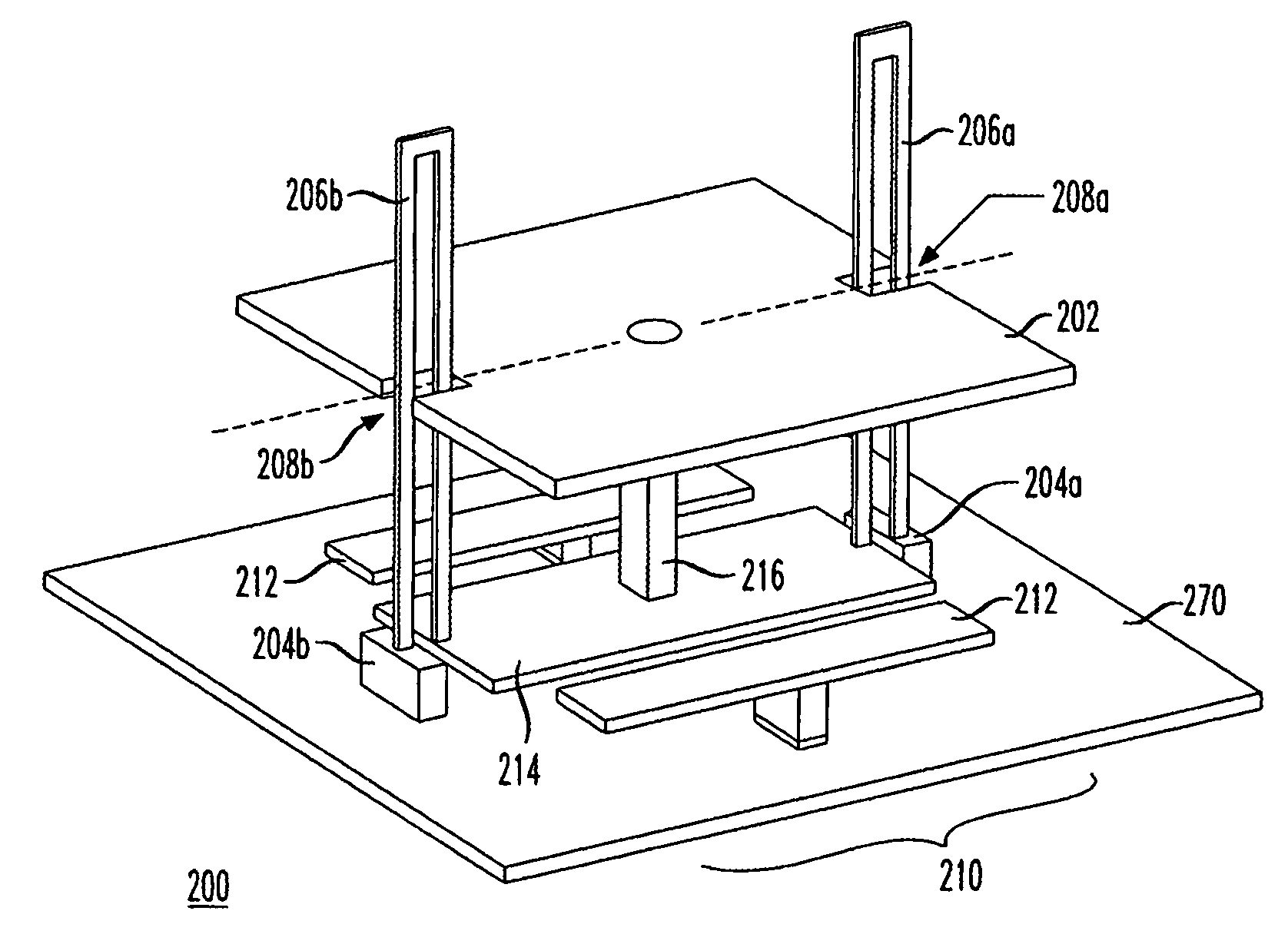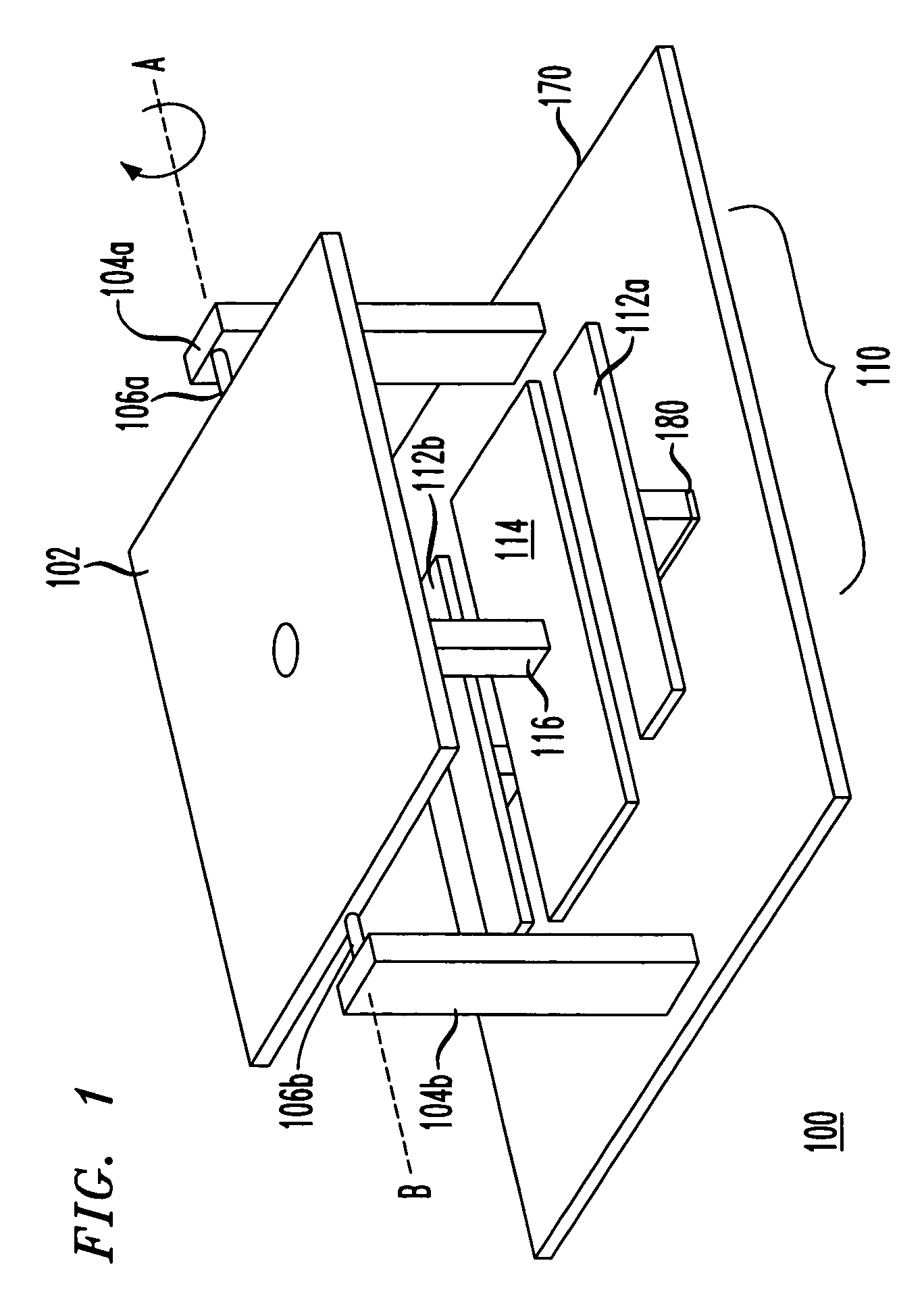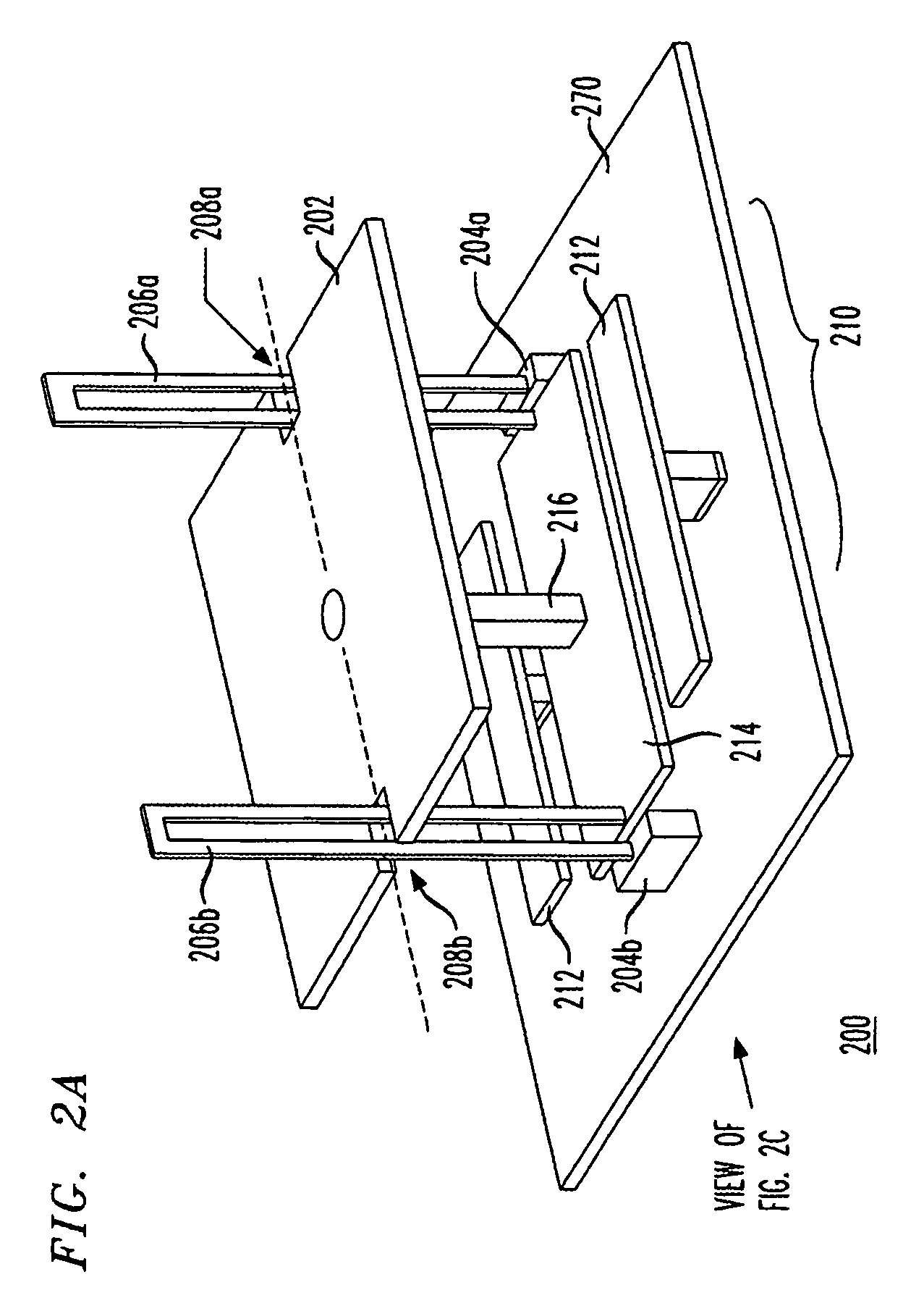MEMS device for an adaptive optics mirror
a mirror and optics technology, applied in the field of microelectromechanical systems, can solve the problems of significantly reducing the fill factor, difficult or even impossible to meet, and reducing the image quality, so as to achieve small lateral displacement and small surface area
- Summary
- Abstract
- Description
- Claims
- Application Information
AI Technical Summary
Benefits of technology
Problems solved by technology
Method used
Image
Examples
Embodiment Construction
[0016]FIG. 1 shows a three-dimensional perspective view of an exemplary MEMS device 100 arranged in accordance with the principles of the invention, which may be used to implement a pixel of an adaptive optics mirror. Device 100 has a movable plate 102 and connected to a motion actuator 110. Plate 102 is supported by a pair of torsion rods 106a–b, each connected between the plate and one of posts 104a–b attached to a substrate 170. Rods 106a–b define an axis of rotation for plate 102 shown by the dashed line and labeled AB in FIG. 1.
[0017]Actuator 110 is a fringe-field actuator made up of two lateral electrodes 112a–b and an intermediate electrode 114. Lateral electrodes 112a–b are attached to substrate 170 and, as such, are stationary. In contrast, intermediate electrode 114 is attached to plate 102 by a link rod 116 and, as such, is movable, together with the plate, with respect to substrate 170. When intermediate electrode 114 is moved toward one of lateral electrodes 112, link r...
PUM
| Property | Measurement | Unit |
|---|---|---|
| temperature | aaaaa | aaaaa |
| circumference | aaaaa | aaaaa |
| distance | aaaaa | aaaaa |
Abstract
Description
Claims
Application Information
 Login to View More
Login to View More - R&D
- Intellectual Property
- Life Sciences
- Materials
- Tech Scout
- Unparalleled Data Quality
- Higher Quality Content
- 60% Fewer Hallucinations
Browse by: Latest US Patents, China's latest patents, Technical Efficacy Thesaurus, Application Domain, Technology Topic, Popular Technical Reports.
© 2025 PatSnap. All rights reserved.Legal|Privacy policy|Modern Slavery Act Transparency Statement|Sitemap|About US| Contact US: help@patsnap.com



